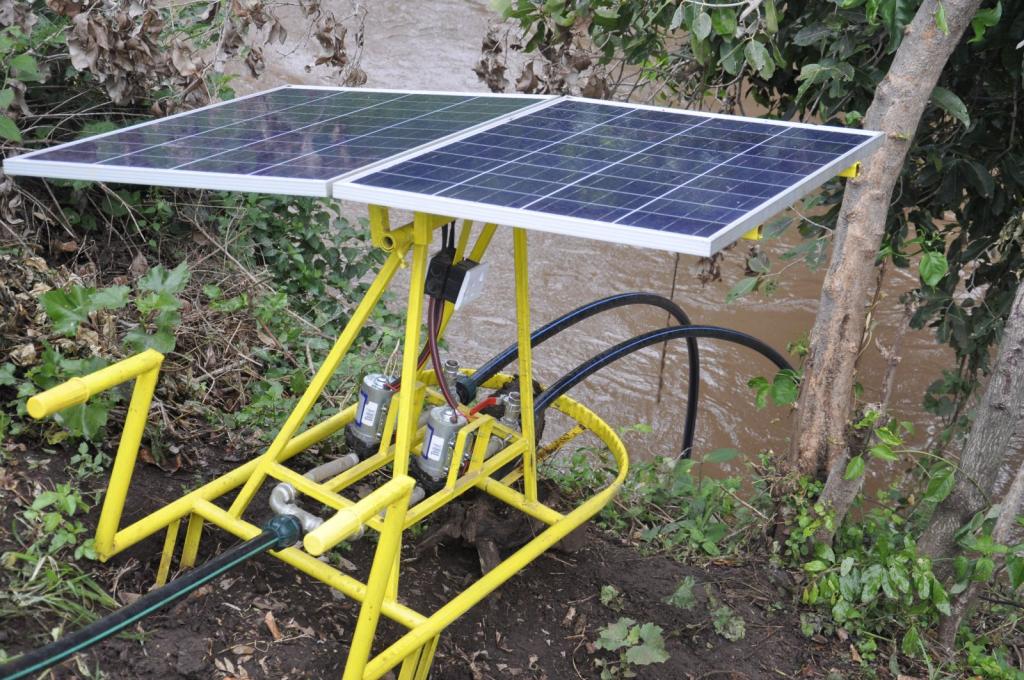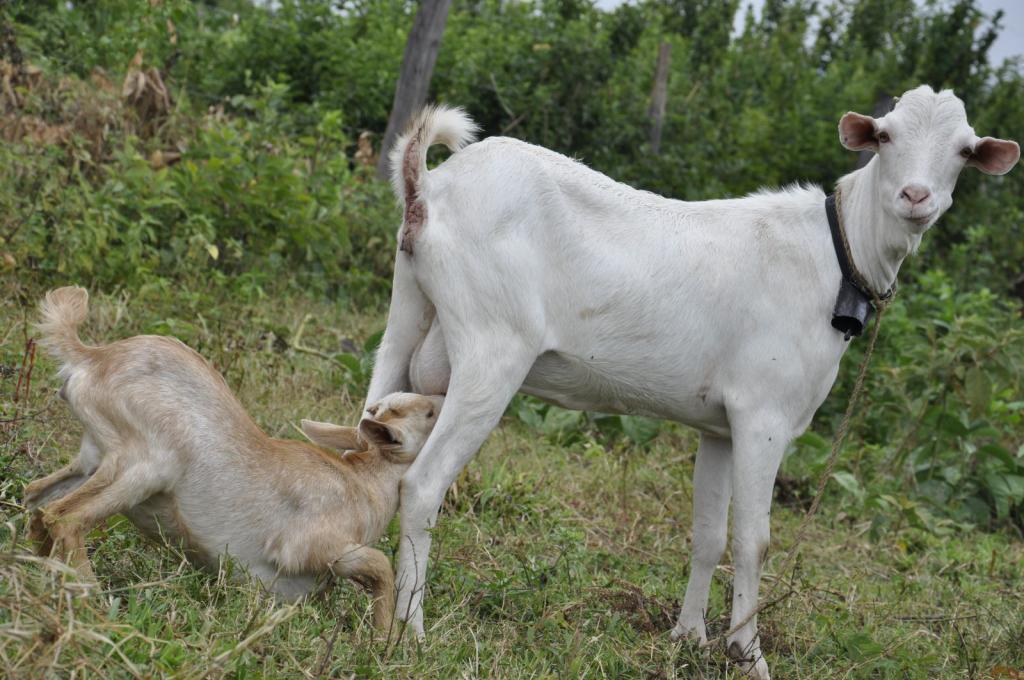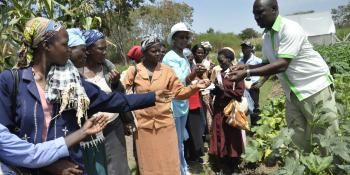Promoting farmer to farmer learning in western Kenya

It's the annual farmer learning event in Nyando, Western Kenya. See how the local community shares knowledge on climate smart agriculture.
It was early morning. The weather was chilly and wet. A brisk wind swept through the rain across Kapsorok village, Soin-Sigowet sub county of Kericho. The bumpy ride through the countryside provided a clear testimony of climate-related risks that rural farming communities are faced with in this Western part of Kenya. Deep gulleys were visible, trapping tons of rich topsoil by the roadside. It was time for the annual farmer-learning event. By nine o'clock, we joined hundreds of farmers in the village to learn about innovative farming technologies and practices viable to them, given the increasingly unpredictable weather.
The 2016 farmer field days were organized by two Nyando community-based organizations (CBOs) namely Friends of Katuk Odeyo (FOKO) and Kapsokale together with the CGIAR Research Program on Climate Change, Agriculture and Food Security (CCAFS) and Vi Agroforestry. The event took place in Kapsorok on 12 July and Obinju on 13 July in Soin-Sigowet and Nyakach sub-counties.
Nyando’s smart farms
A solar powered water pump in one of Nyando's smart farms managed by youth groups. Photo: V.Atakos (CCAFS)
The farmers visited smart farms managed by young farmers. Smart farm technologies include greenhouse farming of up to one quarter of a hectare, combined with drip irrigation with the advantage of saving water. The greenhouse is free from flooding and drought and offers better control of pests and diseases. The production cycle is regular, therefore the harvest can be better timed for local markets. Greenhouse farming represents a shift from open crop cultivation.
Other smart farm technologies include rainwater harvesting, soil fertility conservation, crop diversification and fish farming. For example, next to their greenhouse, the Obinju youth group has established two water pans with a total capacity of over 250,000 litres having over 1,000 tilapia fish. These farms serve as demonstration sites for youth and women groups engaged in agriculture. Due to the nature of the intensive knowledge and skills required to operate the greenhouse production units, youth groups are trained as part of the process of advancing local adaptation actions.
“Before establishment of the smart farm, our members were involved in sand harvesting from the adjacent River Kapsorok and charcoal burning. This accelerated expansion of gulleys and degradation of riverine vegetation. Now we have tomatoes in the greenhouse and other vegetables in the open field. The fish provide an additional source of income and nutrition,” said Vincent Cheruiyot, Chair of Kapsorok smart farm.
Resilient goat and sheep breeds
Galla goats on Paul Rono's farm. Photo: V. Atakos (CCAFS)
Farmers also visited Joshua Omollo and Paul Rono who are keeping improved livestock breeds. These include fast maturing Gala goats with high twining birth rates, tolerant to pests and diseases and also fetch good market prices. In addition, they also keep Red Maasai sheep which they explained are more tolerant to heat stress and diseases compared to the local fat-tailed breed they kept previously.
The newly introduced gala goats can fetch 13,000-16,000ksh (USD 130-160) on a good market day. This is three to four times the cost of the local breeds.
“The newly introduced gala goats can fetch 13,000-16,000ksh (USD 130 - 160) on a good market day. This is three to four times the cost of the local breeds and they only take six months to achieve maturity” explained Joshua Omollo, a smart farmer in Obinju Village.
The involvement of the CBO in goat and sheep rearing has also influenced people from other areas to learn from the community. Subsequently, cross breeding has led to the introduction of improved breeds which are not only drought-tolerant but also have faster maturity rates besides having better market yields. The International Livestock Research Institute (ILRI) scientists provide technical support to the CBOs, through trained community paravets, to prevent inbreeding.
Crop diversification
On Paul Rono’s farm, drought-tolerant varieties of sorghum and finger millet draws one’s attention. Compared to neighbouring farmers, Paul is expecting a good harvest. The adoption of the early maturing and drought-tolerant varieties has helped many farmers in Nyando manage the risks posed by climate variability. Other crop varieties grown include: pigeon peas, cowpeas, green grams and sweet potatoes to supplement the traditional maize, cassava and bean staples.
Way forward
To wrap up the learning events, farmers, agriculture extension officers, non-governmental organisations attending the event and CCAFS officers held meetings to discuss emerging issues and how to further promote uptake of technologies and practices.
“CCAFS and the partners are doing a commendable job, a clear gesture that residents of lower Nyakach are headed for a brighter future with climate-smart agriculture,” said Yonah Koko Maina, the area Member of County Assembly (MCA) who attended the learning event. He further noted collaboration with the county government would accelerate the uptake of CSA. He pledged eight water pumps to active CBOs in the area.
CCAFS will continue partnering with like-minded organizations to avail and promote evidence-based solutions for climate change adaptation and mitigation.
View photos of the event below:
Partners working in the Nyando climate-smart villages include Kenya Agricultural and Livestock Research Organization (KALRO), the Ministry of Agriculture, Livestock and Fisheries (MALF), Magos Farm Enterprises, Maseno University, County Government of Kisumu, Vi Agroforestry and Thin Qubator Aquaculture. They also participated in the farmer learning event.
James Ogweno is an Intern working with the CCAFS EA participatory action research team in Nairobi, Kenya. Phillip Kimeli is a Research Technician while Vivian Atakos is a Communication Specialist. Both work for CCAFS EA in Nairobi.





